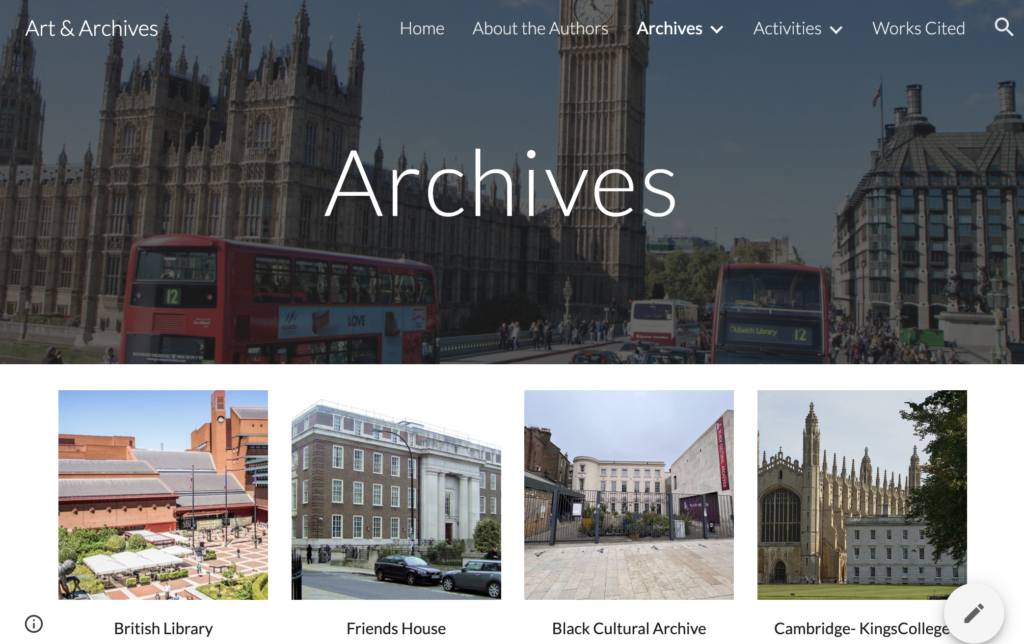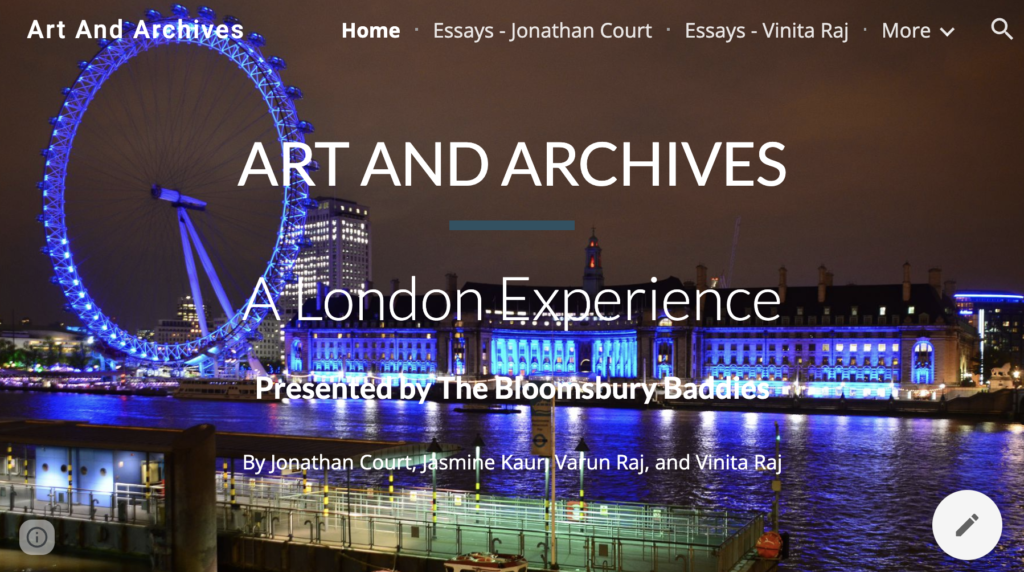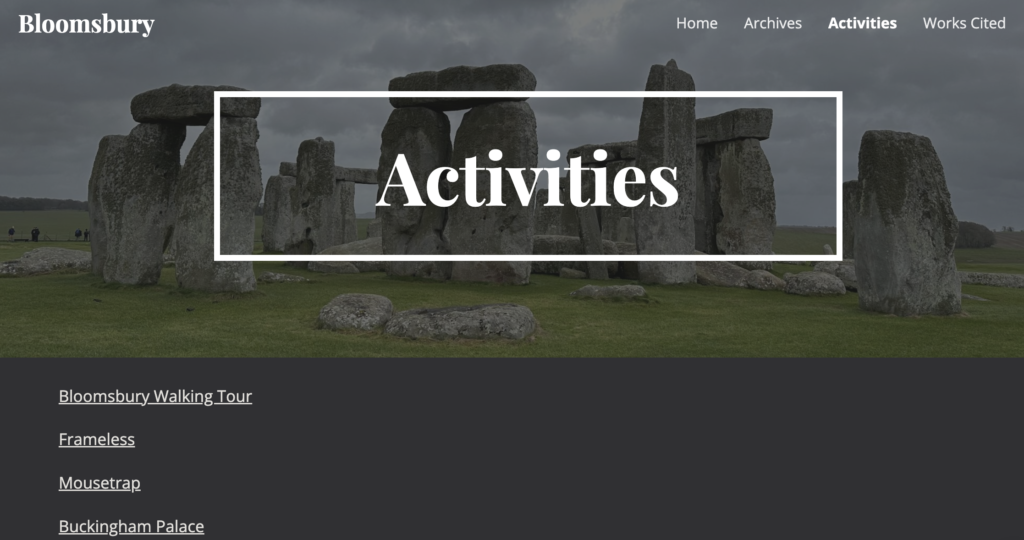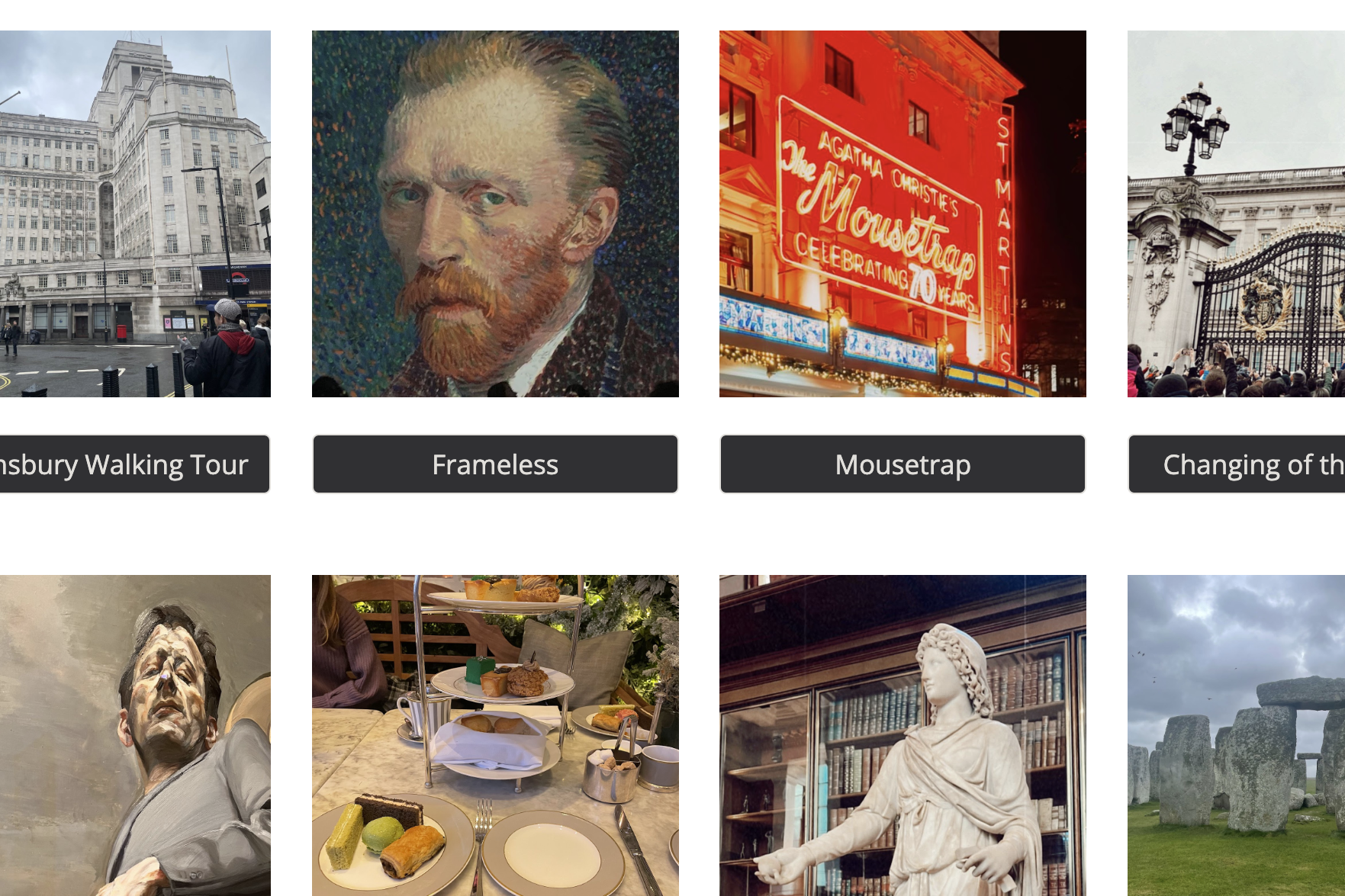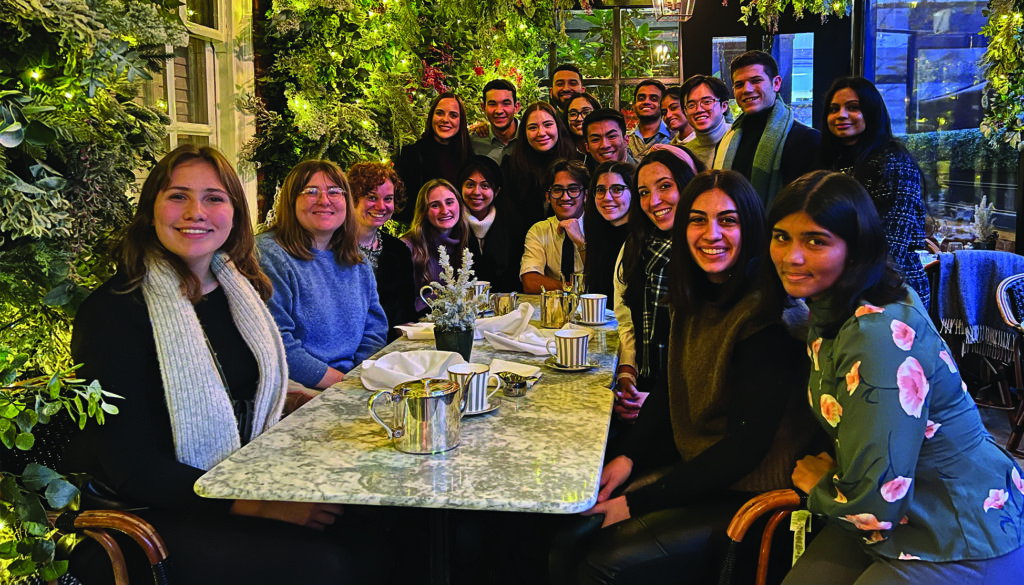
Digital Humanities Edition
The Art & Archives: A London Experience – Digital Humanities Edition was created by a class of interdisciplinary undergraduate and graduate students who participated in the Arts and Humanities General Education London Program. The course titled Bloomsbury Group Art & Literature took place over three weeks in London during the Winter of 2022-2023. It challenged students to draw connections between the history of early 20th century London, the works of creatives from the Bloomsbury Group, and the concrete environment of modern London.
We, the members of the course, created five digital mapping and archival projects with the purpose of showcasing our experience and our viewpoints on various works, and drawing connections between the history of the Bloomsbury Group and the archival documents. We dove into the archives and examined letters, manuscripts, scrapbooks, soundscapes, and ephemera. Each archive held a specific set of collections for us to analyze and connect to commonly occurring themes in the course material.
The archives that allowed us access to their primary documents include: The British Library, Friends House, Black Cultural Archives, King’s College Archive (Cambridge University), Woman’s Library (University College London Library), Tate Reading Rooms, The Keep, and Imperial War Museum Archives and Exhibitions. Our class also visited museums, galleries, and plays within London to experience the modern day developments and representations of the influential figures and artists that we encountered in our studies. These connections were crucial for us to visualize the impact of the relationships identified in our archives.
The Bloomsbury Group included many prominent figures, including renowned authors Virginia Woolf, E.M. Forster, and Mulk Raj Anand, economist John Maynard Keynes, art critics Roger Fry and Clive Bell, and painters Duncan Grant and Vanessa Bell, amongst others. The group was also affiliated with renowned artists and thinkers, such as Siegfried Sassoon, Pablo Picasso, and Sigmund Freud. While these figures all came from different fields, their works culminated in modernist form to discuss progressive ideas and values such as pacifism, anti-imperialism, feminism, and conscientious objection.
Pacifism takes many forms and has many iterations, though it can generally be considered by modern peace studies as not only and simply the advocation of the absence of war, but the active creation of a world that can support peace. This is considered fighting for “positive peace.” All of the members of Bloomsbury worked to promote a positive peace in the world through their art, literature, and actions, even if their individual pacifisms held different expressions.
Imperialism is the policy of a nation expanding its power through methods of foreign diplomacy and/or military force. Given the time period in which the Bloomsbury Group existed, it was a central topic discussed among many of the group’s members. Due to their nature as advocates for peace, Leonard and Virginia Woolf and Mulk Raj Anand in particular were vociferously against the idea of imperialism and military use to achieve political goals.
Members such as Duncan Grant and David “Bunny” Garnett served as conscientious objectors against Britain’s First World War efforts. A conscientious objector, or C.O., was a person who opposed supporting war efforts due to their moral or religious principles. During both world wars, C.O.s took different forms. Some served as medics and did not carry firearms, but others refused to take part in the system of war in any capacity. These ideas were prominent amongst the members of the Bloomsbury group, as many were pacifists.
Feminism has taken many forms throughout history. But in the context of the Bloomsbury group, it can be seen through a reading of Virginia Woolf’s famous treatise A Room of One’s Own, which dictates that women need time, space, and education to gain independence away from their gender roles as mothers and wives. Three Guineas asserts that women’s traditional position of “outsiders” from the centers of power puts them in a unique vantage point to contribute to war prevention discourses, and that they could pave the way to a world without war.
All of these themes appeared in the course readings, archives, and are embedded in the following Digital Humanities projects. Digital Humanities (DH) is a new and innovative field that can be thought of as using computational methods to undertake the research, scholarship, teaching, interrogation, and presentation of academic questions. While there are many areas of DH, this exhibition brings together two primary sub-fields: mapping and archival exploration.
We present to you a unique gallery experience where you are invited to interact with the media. Explore the pins on the maps to view the locations of each of our course activities. We encourage you to examine how each student brings a unique perspective to the overlapping archival materials–a core concept to digital humanities and diving deep into the archives.
Cheers from the 2022-2023 London Study Abroad Course!
Project Gallery
